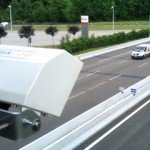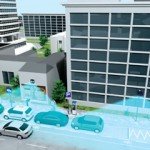The idea that cars might drive themselves has been with us for many years. However, it’s only recently that the computing power, software sophistication and sensor developments required to make automated vehicles – both practical and viable – have been achieved. Now new trials in the UK and a rash of early stage initiatives in emerging markets will only accelerate ...
Blog Archives
INTELLIGENT TRAFFIC MANAGEMENT FOR ‘Smarter’ Cities
Sabhijiit Sandhu, Naman Jain, & Aditya Gaurav, all B-Tech Computer Science students and Professor N Ch. S N Iyengar, Senior Professor, School of Computer Science Engineering, Vellore Institute of Technology, have come up with a solution that they believe is capable of not only mitigating the problems of traffic mismanagement but also improve the traffic conditions. The solution involves having ...
Radar technology to get rid of accidents with ghost drivers
Jean-Hubert Wilbrod, President, Neavia technologies writes about video and radar technologies to track traffic offenders Wrong way drivers on highways or ramps are a challenge for road safety: Roughly one fatality each year every 1000km motorway over European roads. It is not the major cause accident, but is too much indeed. When a lorry carrying flammable products is impacted, it ...
Speed/Red Light Enforcement & Safety
The increasing traffic density on city roads is leading to Red light and Speed Violation and consequently to increased road accidents. Indian cities are trying to be Smart and Safe with the use of Video Surveillance and advanced traffic management systems. TrafficInfraTech spoke to Traffic Police officials of various states to find out the system being put in place for ...
Need for Standards and Uniformity
Balraj Bhanot, Management Consultant, Chairman TEDC (BIS), Former Director ARAI and Chairman CMVR-TSC writes on the need for standardization in ITS technology Intelligent Transport Systems (ITS) is a wide field, and today, there is no single ownership to the subject in the country. The subject of ITS cuts across various ministries of the government like Transportation, Communication, Railways, Civil Aviation, ...
Emergency Driving, Risk Perception, Observation and training methods
Following recent improvements in the field of eye-tracking, Australia based Shawsett Training and Safety is now doing trials on drive simulations using eye tracking training to provide a safer and more effective training. The major impact is to improve observation and risk awareness, an essential requirement when driving in busy Indian conditions. Steve Shaw, Managing Director, Shawsett Training and Safety ...
Transportation Infrastructure: Increased safety through increased availability
Dynamic traffic control takes into consideration the current traffic situation and influences the traffic flow by means of previously defined strategies. It helps to measurably improve traffic flow. Phoneix Contact India Pvt Ltd offers a comprehensive portfolio of solutions. Complex systems which must operate in a fail-safe way, such as transportation routes, engineering works, airports or railway stations, require intelligent ...
Software Safety Assurance for Metro Railways
Modern railway systems are becoming more software intensive than ever before. Majority of safety functions are implemented and/or controlled by computers. Dr Ajeet Kumar Pandey, RAMS Leader, Alstom Transport, explains the software safety assurance model for metro railway. System Safety is the key driver in the design of systems and must stand upfront before any analysis. It is a planned, ...
Integrating Bicycles and Public Transport
Naresh Kuruba, Research Scholar, CEPT University and Shalini Sinha, Associate Professor, CEPT University assess the applicability and acceptability of Bike and Ride (B&R) facilities in case of Ahmedabad city. Public transit is not designed to provide a door-to-door connectivity unlike personalized modes of transport. Access and egress are the weakest links in public transit and it is recommended to have ...
The sensor-controlled parking management system
Siemens’ new sensor-controlled parking management system can help optimize usage of urban parking spaces and radically reduce traffic in towns and cities According to the latest Apcoa study, motorists drive an average of 4.5 kilometers before they finally find somewhere to park. That costs time, gasoline and nerves. However sensor networks can gather information on the parking situation in the ...
 TrafficInfraTech Magazine Linking People Places & Progress
TrafficInfraTech Magazine Linking People Places & Progress









